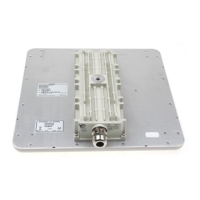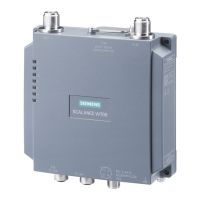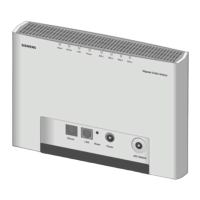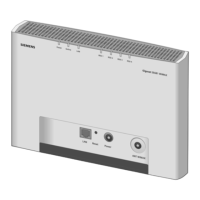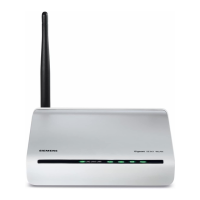RUGGEDCOM ROS
User Guide
Chapter 4
System Administration
Authentication Related Security Alarms 121
Parameter Description
Enables logging the occurrence of this alarm in syslog.txt.
LED & Relay Synopsis: { On, Off }
Default: Off
Enables LED and fail-safe relay control for this alarm. If latching is
not enabled, this field will remain disabled.
Refresh Time Synopsis: 0 s to 60 s
Default: 60 s
Refreshing time for this alarm.
4. Click Apply.
Section4.6.4
Authentication Related Security Alarms
This section describes the authentication-related security messages that can be generated by RUGGEDCOM ROS.
CONTENTS
• Section4.6.4.1, “Security Alarms for Login Authentication”
• Section4.6.4.2, “Security Messages for Port Authentication”
Section4.6.4.1
Security Alarms for Login Authentication
RUGGEDCOM ROS provides various logging options related to login authentication. A user can log into a
RUGGEDCOM ROS device in three different ways: Console, SSH or Telnet. RUGGEDCOM ROS can log messages
in the syslog, send a trap to notify an SNMP manager, and/or raise an alarm when a successful and unsuccessful
login event occurs. In addition, when a weak password is configured on a unit or when the primary authentication
server for TACACS+ or RADIUS is not reachable, RUGGEDCOM ROS will raise alarms, send SNMP traps and log
messages in the syslog.
The following is a list of log and alarm messages related to user authentication:
• Weak Password Configured
• Login and Logout Information
• Excessive Failed Login Attempts
• RADIUS Server Unreachable
• TACACS Server Unreachable
• TACACS Response Invalid
• SNMP Authentication Failure
NOTE
All alarms and log messages related to login authentication are configurable. For more information
about configuring alarms, refer to Section4.6.3, “Configuring an Alarm” .

